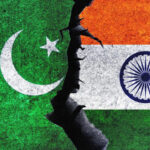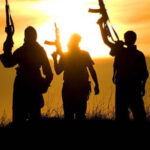Did the military standoff in Ladakh impact regional ties?
The story so far: This year, India faced a trifecta of challenges in its neighbourhood from China: the COVID-19 pandemic, the growing competition for influence in South Asia, and aggressive actions at the Line of Actual Control (LAC) by China’s People’s Liberation Army (PLA).
How has India helped tackle the regional COVID-19 challenge?
The COVID-19 pandemic that originated in China has led to one of the biggest health challenges, causing heavy economic damage in South Asia. India ranks second after the United States in terms of number of cases, and the worst-hit economy among G20 nations. But India is also one of the best poised nations to aid recovery efforts in the region, given its status as one of the world’s leading producers of pharmaceutical drugs and vaccines. In March, Prime Minister Narendra Modi held a special virtual summit of eight SAARC nations and proposed a COVID-19 package, for which India provided about half of the $20 million funding for relief. India’s military ran a series of missions to SAARC countries and the Indian Ocean Region (IOR) with supplies of food and medicines, and India’s ‘Vande Bharat’ mission flew home nationals from neighbouring countries, along with lakhs of Indians who had been stranded during the lockdown.
Analysis | COVID-19 an opportunity for India’s health diplomacy
India was not the only country in the region providing help. China, too, stepped up efforts to extend its influence in the South Asian region through COVID-19 relief. Chinese Vice-Minister in-charge of the region, Luo Zhaohui, held meetings with different groups of SAARC countries, including one with Pakistan, Afghanistan and Nepal, and another with Pakistan, Nepal, Bangladesh and Sri Lanka to coordinate relief efforts, and promised to provide the Chinese-made Sinovac vaccine to them when it is available. China also shipped relief to South Asia, sending out PPE suits and other medical equipment. Given that all SAARC countries except India and Bhutan are part of the Belt and Road Initiative (BRI), and owe different amounts of debts to Chinese banks, Beijing stepped in to provide partial debt waivers to the Maldives and Sri Lanka. It also extended a massive $1.4-billion Line of Credit to Pakistan.
Did the military standoff impact regional ties?
China doubled down on territorial claims and its transgressions along its borders with South Asia: from Ladakh to Arunachal Pradesh, PLA soldiers amassed along various sectors of the LAC, leading to violent clashes. The deaths of 20 Indian soldiers at the Galwan valley was the first such casualty in 45 years. China also laid claim to Bhutan’s Sakteng natural reserves and pushed along the boundary lines with Nepal, all of which changed India’s strategic calculations along its Himalayan frontiers. That India and Nepal saw their worst tensions in decades over the construction of a road to Lipulekh, leading to Nepal amending its constitution and map to claim Indian territory, added to the already fraught situation. Meanwhile, a new defence pact this year between China and Pakistan vis-à-vis a sharp rise in ceasefire violations along the Line of Control (LoC) with Pakistan to the highest levels since 2003, has made it clear that India must factor in among its military challenges at the LAC the possibility of a two-front war.
How has India dealt with a three-pronged challenge?
The government’s response to the challenges has been to assert its Neighbourhood First and SAGAR (Security and Growth for All in the Region) strategies as foreign policy priorities. Apart from the COVID-19 relief and neighbourhood visits, Mr. Modi and External Affairs Minister S. Jaishankar have been in frequent touch with their counterparts in the region. Mr. Modi and Bangladesh Prime Minister Sheikh Hasina held a virtual summit on December 17. India has also upped its game on infrastructure delivery, particularly for regional connectivity in the past year, including completing railway lines to Bangladesh and Nepal, riverine projects, ferry service to the Maldives, identifying other services to Sri Lanka and IOR islands, while also considering debt waiver requests from its neighbours.
Comment | Needed, a map for India’s foreign policy
Unlike in the past, India has also become more flexible about the entry of other powers to help counter China’s influence in the region — it recently welcomed the U.S.’s new military dialogue with the Maldives. America’s Millennium Challenge Corporation’s (MCC) projects in Afghanistan, Bhutan, Sri Lanka, Nepal and Bangladesh are also finding more space.
Furthermore, as part of its Indo-Pacific policy, New Delhi is also encouraging its Quad partners — the U.S., Japan and Australia — to collaborate on security and infrastructure initiatives in the neighbourhood, along with promoting forays by other partners like the U.K., France and Germany in the region. It is also significant that despite considerable security challenges from China, India has not sought to elicit support from its neighbours, which might have put them in a difficult position. Thus, the Modi government has made it clear that despite the provocations, it intends to resolve the nearly ten-month-long military standoff diplomatically and bilaterally.
The Hindu Explains | What were the major challenges to India’s Neighbourhood First Policy this year?
Did the military standoff in Ladakh impact regional ties?
The story so far: This year, India faced a trifecta of challenges in its neighbourhood from China: the COVID-19 pandemic, the growing competition for influence in South Asia, and aggressive actions at the Line of Actual Control (LAC) by China’s People’s Liberation Army (PLA).
How has India helped tackle the regional COVID-19 challenge?
The COVID-19 pandemic that originated in China has led to one of the biggest health challenges, causing heavy economic damage in South Asia. India ranks second after the United States in terms of number of cases, and the worst-hit economy among G20 nations. But India is also one of the best poised nations to aid recovery efforts in the region, given its status as one of the world’s leading producers of pharmaceutical drugs and vaccines. In March, Prime Minister Narendra Modi held a special virtual summit of eight SAARC nations and proposed a COVID-19 package, for which India provided about half of the $20 million funding for relief. India’s military ran a series of missions to SAARC countries and the Indian Ocean Region (IOR) with supplies of food and medicines, and India’s ‘Vande Bharat’ mission flew home nationals from neighbouring countries, along with lakhs of Indians who had been stranded during the lockdown.
Analysis | COVID-19 an opportunity for India’s health diplomacy
India was not the only country in the region providing help. China, too, stepped up efforts to extend its influence in the South Asian region through COVID-19 relief. Chinese Vice-Minister in-charge of the region, Luo Zhaohui, held meetings with different groups of SAARC countries, including one with Pakistan, Afghanistan and Nepal, and another with Pakistan, Nepal, Bangladesh and Sri Lanka to coordinate relief efforts, and promised to provide the Chinese-made Sinovac vaccine to them when it is available. China also shipped relief to South Asia, sending out PPE suits and other medical equipment. Given that all SAARC countries except India and Bhutan are part of the Belt and Road Initiative (BRI), and owe different amounts of debts to Chinese banks, Beijing stepped in to provide partial debt waivers to the Maldives and Sri Lanka. It also extended a massive $1.4-billion Line of Credit to Pakistan.
Did the military standoff impact regional ties?
China doubled down on territorial claims and its transgressions along its borders with South Asia: from Ladakh to Arunachal Pradesh, PLA soldiers amassed along various sectors of the LAC, leading to violent clashes. The deaths of 20 Indian soldiers at the Galwan valley was the first such casualty in 45 years. China also laid claim to Bhutan’s Sakteng natural reserves and pushed along the boundary lines with Nepal, all of which changed India’s strategic calculations along its Himalayan frontiers. That India and Nepal saw their worst tensions in decades over the construction of a road to Lipulekh, leading to Nepal amending its constitution and map to claim Indian territory, added to the already fraught situation. Meanwhile, a new defence pact this year between China and Pakistan vis-à-vis a sharp rise in ceasefire violations along the Line of Control (LoC) with Pakistan to the highest levels since 2003, has made it clear that India must factor in among its military challenges at the LAC the possibility of a two-front war.
How has India dealt with a three-pronged challenge?
The government’s response to the challenges has been to assert its Neighbourhood First and SAGAR (Security and Growth for All in the Region) strategies as foreign policy priorities. Apart from the COVID-19 relief and neighbourhood visits, Mr. Modi and External Affairs Minister S. Jaishankar have been in frequent touch with their counterparts in the region. Mr. Modi and Bangladesh Prime Minister Sheikh Hasina held a virtual summit on December 17. India has also upped its game on infrastructure delivery, particularly for regional connectivity in the past year, including completing railway lines to Bangladesh and Nepal, riverine projects, ferry service to the Maldives, identifying other services to Sri Lanka and IOR islands, while also considering debt waiver requests from its neighbours.
Comment | Needed, a map for India’s foreign policy
Unlike in the past, India has also become more flexible about the entry of other powers to help counter China’s influence in the region — it recently welcomed the U.S.’s new military dialogue with the Maldives. America’s Millennium Challenge Corporation’s (MCC) projects in Afghanistan, Bhutan, Sri Lanka, Nepal and Bangladesh are also finding more space.
Furthermore, as part of its Indo-Pacific policy, New Delhi is also encouraging its Quad partners — the U.S., Japan and Australia — to collaborate on security and infrastructure initiatives in the neighbourhood, along with promoting forays by other partners like the U.K., France and Germany in the region. It is also significant that despite considerable security challenges from China, India has not sought to elicit support from its neighbours, which might have put them in a difficult position. Thus, the Modi government has made it clear that despite the provocations, it intends to resolve the nearly ten-month-long military standoff diplomatically and bilaterally.






NO COMMENT